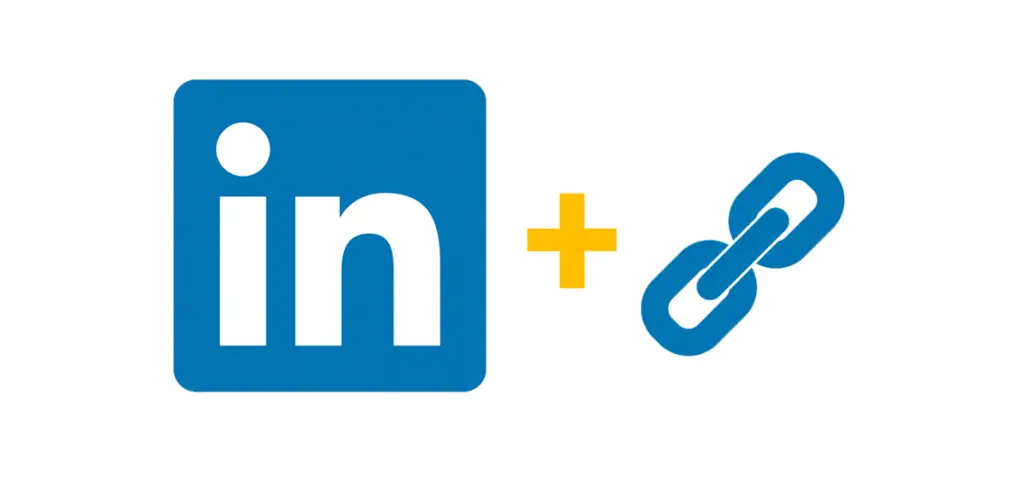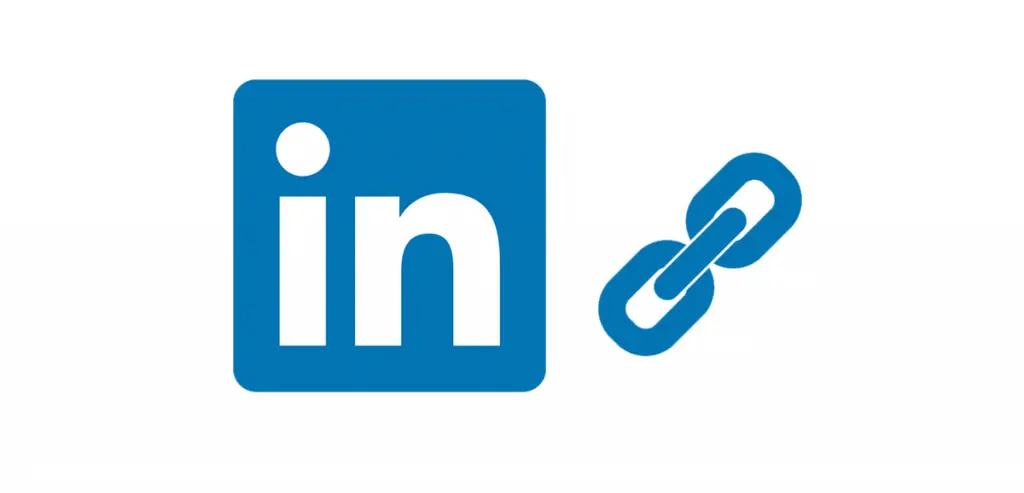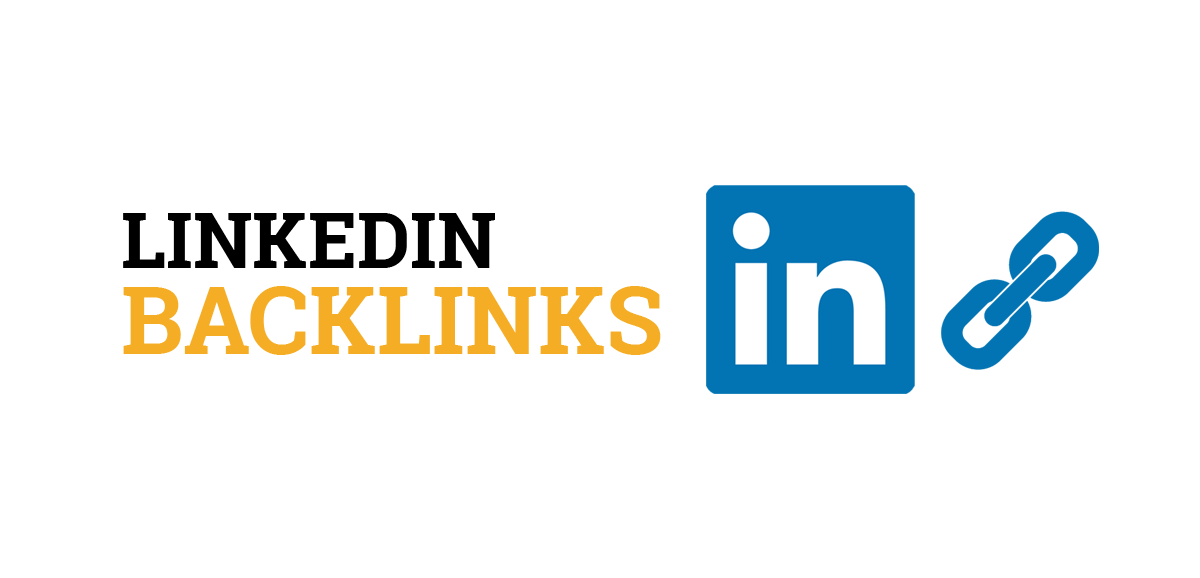In this article, you’ll learn about LinkedIn backlinks for SEO.
LinkedIn link building is a powerful marketing strategy you can use to increase exposure for your content, build quality backlinks to your website or blog, and create more awareness for your brand online.
As you know, backlinks are one of the top ranking factors for Google, Yahoo, and Bing, and this guide will show you how to use LinkedIn to build more high quality backlinks both on and off the platform to increase your website’s domain authority and page authority metrics for better search engine optimization.
What Are LinkedIn Backlinks?
LinkedIn backlinks are links to your website from the LinkedIn platform. A LinkedIn backlink can be a direct link from a user’s post, as a contextual link in a LinkedIn article, or a URL backlink in the comments section.
LinkedIn can help your site get more backlinks both directly and indirectly to increase your website’s visibility in search engine results pages (SERPs).
Note: When you’re done reading the link building guide below, you may also what to check out this other post on improving your LinkedIn SEO. It includes all of the ways you can optimize your posts to rank higher on the platform itself and in the search engines for more visibility.

How to Get LinkedIn Backlinks for SEO
1. Create a LinkedIn Account
The first step in LinkedIn link building is to create a personal account.
This will give you access to all of the backlinking features of LinkedIn and allow you to connect with other professionals in your industry to build more organic links to your website.
Go to LinkedIn.com to set up your account for free. Once you’ve filled out all of the required information, you’ll be able to create LinkedIn backlinks for SEO.
2. Start a LinkedIn Business Page
If you’re serious about using LinkedIn for link building, then you should also start a business page for your website. This will give you more opportunities to generate backlinks from the platform and allow you to promote your business on LinkedIn to get more organic reach.
- Click on the “Work icon” in the top right corner of your LinkedIn homepage, then click “Create a Company Page”. Next, follow the prompts to set up your new business page.
3. Put a Backlink In Your LinkedIn Account Contact Info
The first place you can put LinkedIn backlinks is on your personal account under the Contact Info section.
To do this, navigate to your profile and click on the “Edit Profile” button. Then, scroll down to the bottom of the pop up page and click on the “Edit Contact Info” link. Next, enter your website URL in the “Website” field. You can also choose a specific type for the website by clicking on the dropdown menu next to the website field, including “personal”, “company”, “blog”, “RSS feed”, “portfolio”, or “other”. After you’ve completed this step, click the “Save” button for the backlink to be published on your LinkedIn profile.
4. Add a Backlink to Your Business Page
If you set up a LinkedIn business page as recommended in step 2, then the next place you can easily add a LinkedIn backlink is under the business details section.
To use this LinkedIn link building strategy, navigate to your business page and click on the “Edit Page” button. Next, enter your website address in the “Website URL” field and then click on the “Save” button for your backlink to appear on your business page.
(Note: If you want to know all of the places you can put links on other platforms like Facebook, Twitter, Reddit, Medium, YouTube, etc., then check out this other social media link building guide after you’re done reading this page.)
5. Put Links In Your Posts
When you create a post on LinkedIn, you have the opportunity to include a link to your website or blog. This is a great way to get more exposure for your content and increase the number of backlinks pointing to the most important pages on your site.
To include a backlink in your post, simply type the URL into the text field and LinkedIn will automatically pull the metadata information and featured image into the post.
You should make it a habit to share daily links to your website so you can increase the number of views for those LinkedIn posts. Also, make sure to 3-5 relevant hashtags to the post description so that your links will appear in the LinkedIn search engine for other users who are following those industry topics.
6. Add Backlinks To LinkedIn Articles
LinkedIn articles are a powerful way to share long-form content with your target audience and increase exposure for your brand with people who are not yet members of the network.
What makes LinkedIn articles so beneficial for digital marketing, SEO, and link building is that this content will be seen in the feeds of people who are connected to you on LinkedIn and through search engines like Google because these articles can get indexed and ranked in the SERPs for target keywords.
A good strategy here is to write an original LinkedIn article based on a topic that’s relevant to a web page on your site and optimize it for on-page SEO. That way, you can improve your chances of the article ranking in the top 10 positions on Google, Yahoo, and Bing and getting organic backlinks from other LinkedIn users who want to cite your content on their websites.
As for the length of your articles, you can write up to 125,000 characters (or 20,000 words) which gives you plenty of opportunity to showcase your expertise and knowledge on the topic and include several relevant backlinks to your website. Using contextual backlinks is also important here to help send important signals to the search engine algorithms about what keywords the target page should be ranked for.
Now, don’t feel pressured to max out the word count with this LinkedIn link building strategy. A 1,000 to 3,000-word article is perfectly fine for a LinkedIn article and is actually the preferred length for most people’s reading tolerance.
To create backlinks to your website or blog in the article, just highlight the text you want to use for the link and insert the correct hyperlink. You can also insert standard URLs if you’re following a specific anchor text optimization ratio to achieve a more natural website backlink profile.
When you use LinkedIn articles the right way, you’ll not only increase the domain authority and page authority for your website as link equity gets passed through the backlinks on those articles to your website, but you’ll also drive more qualified traffic to your content by increasing visibility on the LinkedIn platform and in the search engines.
7. Repurpose Blog Posts On LinkedIn
If you have a blog, then you can easily repurpose your content on LinkedIn to get more exposure and increase the number of backlinks to your website.
A similar strategy is mentioned for the Medium platform, which can be read in this other guide on creating Medium backlinks for SEO. Give it a read if you’re interested in using Medium as another channel for off-page search engine optimization.
Essentially, what you do is repurpose a section of an existing article or blog post from your website on LinkedIn; not the entire content. Then add a call-to-action (CTA) at the end with a contextual backlink or unbranded anchor text (e.g., “learn more”) for people to read the full article on your website.
This content strategy is beneficial for two reasons:
- You can create multiple LinkedIn posts and articles from a single blog post and link them all back to your website.
- This increases exposure for your content to a new audience on LinkedIn and can generate high quality links from readers who visit your site and want to link to the full article from their own website or blog.
As a quick example, this guide you’re reading right now on creating LinkedIn backlinks for SEO has 10 steps (or tips), which could easily be repurposed into 10 short LinkedIn articles or posts with a backlink to the same URL.
If you’re going to make this part of your social media and SEO link building strategy, then the best way to use it is to create a LinkedIn article for your repurposed content. That’s because LinkedIn articles (not posts) can get indexed in Google’s search engine and rank for target keywords. So make sure you optimize each article for on-page SEO to give it the best chance of ranking high in the SERPs.
8. Identify Potential Link Partners on LinkedIn
LinkedIn is the perfect place to find potential link partners to collaborate with for digital marketing purposes. By connecting with other bloggers and online marketers, you can create relationships in your industry that can lead to effective content collaborations.
To identify potential link partners on LinkedIn, simply search for people with businesses in your niche or who have job titles that relate to your target market. When you find someone who looks like a good potential partner, send them a connection request with a personal message to open the lines of communication.
After building up a relationship, you can then ask that person if they would link to a page on your website through a LinkedIn post or article to increase exposure for your brand to their professional network. You can also collaborate on guest posting in SEO and/or get editorial links added to an existing article along with a quote or testimonial.
9. Post Backlinks In Replies to Other Posts
When you reply to other people’s posts on LinkedIn, you have the opportunity to include new links to your website or blog. This is a fast way to get more exposure for your content and increase the number of backlinks you have from LinkedIn.
However, you have to use this strategy with care so your comments don’t look like spam. Only post website links in the comments section when your content is relevant to the user’s post. Also, include a detailed response, opinion, or thoughtful comment so you’re adding value to the post.
Remember: LinkedIn is also used for brand awareness and you can easily ruin your brand’s reputation if you’re just dropping links on people’s posts without adding value to the conversation.
To include a link in your replies on LinkedIn comments, just type the URL into the text field and it will automatically get added as a backlink on the platform.
10. Build Backlinks To Your LinkedIn Articles
The final LinkedIn link building tip is to increase the link equity of your backlinks coming from the platform.
As with any other type of content, you can increase the page authority of your LinkedIn articles by creating backlinks from other websites to them. This will help increase the PageRank value that can be transferred to your website for SEO to help your content rank higher in search engines like Google, Yahoo, and Bing.
You can follow the example tips in these other link building guides for numerous ideas on how to generate more backlinks to your LinkedIn profile articles:
- How to Get High Quality Backlinks
- How to Build Backlinks for Free
- How to Get Backlinks Without Guest Posting
- How to Get Dofollow Backlinks
Is LinkedIn a Good Backlink?
LinkedIn is a good backlink because it delivers qualified traffic to your website and can pass PageRank value for SEO. LinkedIn backlinks are also good for increasing visibility for your content to generate organic links from other website owners and industry professionals.
Do LinkedIn Links Count as Backlinks?
LinkedIn links do count as backlinks and indexed links will show up in your website’s backlink profile. When you write a LinkedIn article that includes backlinks, those LinkedIn links are crawled by search engines for indexing and ranking.
Are LinkedIn Backlinks Dofollow?
LinkedIn backlinks are not dofollow and contain the rel=”nofollow” tag but internal links on the site are dofollow. If you share a LinkedIn article as a post or add a link to a post inside an article, then those internal backlinks are dofollow links that pass link equity for SEO.
On June 6, 2014, LinkedIn implemented a sitewide change that turned all links on the platform from dofollow to nofollow except for internal links to other LinkedIn pages. All internal LinkedIn links are still dofollow to help improve the internal PageRank SEO value for the website.
Although LinkedIn backlinks are nofollow links, they still reside on a website with high domain authority and Google has publicly stated that it now considers the nofollow tag to be a “hint” and not a “directive” for which links to index in its search engine. Therefore, the algorithm may pass link equity through LinkedIn backlinks to improve your website’s PageRank scores for SEO.
Do Links from LinkedIn Help SEO?
Links from LinkedIn do help SEO because they are quality backlinks that can pass link equity to a target website. Backlinks are a core part of SEO and Google’s PageRank algorithm which LinkedIn links can help improve to increase domain and page authority for a website.
Also, LinkedIn users who find quality content posted on the platform may also create organic links to those URLs from their own websites. Therefore, getting links from LinkedIn helps SEO directly and indirectly to increase domain strength and rankings in the SERPs.

LinkedIn Backlinks for SEO Summary
I hope you enjoyed this guide on LinkedIn backlinks for SEO.
As you discovered, LinkedIn link building can help your business in two primary ways: increasing the number of quality backlinks for your website through articles and posts, and improving awareness of your content so other industry professionals.
Those factors combined can lead to more organic traffic and rankings in Google, Yahoo, and Bing because your content is penetrating more of the market and getting in front of the right target audience who can link back to it from their own websites and blogs.

SEO Chatter is dedicated to teaching the fundamentals of search engine marketing to help marketers understand how to increase organic website traffic and improve search engine rankings.

